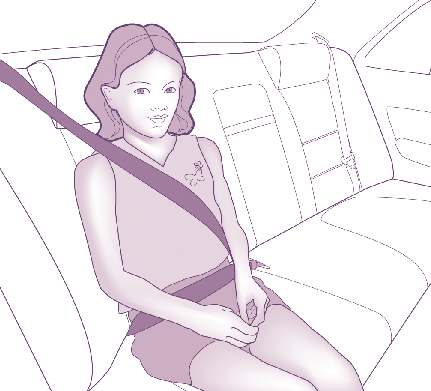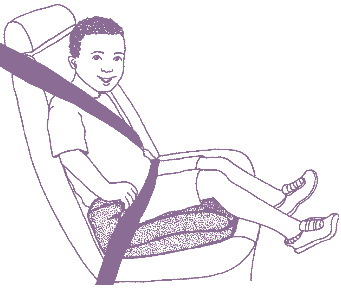Child Passenger Safety, Children Ages 10 to 14 Years
What NYS child passenger safety laws are important for me to know?
NYS law requires children ages eight to 15 years to use safety belts when riding in motor vehicles. The use of appropriate child restraint systems, such as, belt-positioning booster seats is permitted as adult seat belts may not properly fit some children in this age group if they are less than 4'9" tall. More information about NYS's law on child passenger safety can be found on the Governor's Traffic Safety Committee website.
What type of restraint should my child use when riding in the car?
Have your child use lap and shoulder belts rather than lap only belts.
In a crash, the upper body of a child using only a lap belt may be thrown forward until he or she is stopped by something in the car, such as the dashboard, front seats, consoles, door frames, even the floor of the vehicle or the child's knees. This can cause serious injuries to the head, neck or spine. If the lap only belt is crossing over the child's stomach, it should not be used. Serious injuries can occur to vital organs and the spine if a crash occurs. The child should use a booster set with a lap and shoulder belt.

If needed, continue to use a booster seat to properly position the lap and shoulder belt.
Most children in this age group are tall enough so the shoulder and lap belt fit properly. However, your child may need to use a booster seat if he/she is less than 4 feet and 9 inches tall. Place your child on the vehicle seat buckle up without the booster seat and answer the following questions.

It is safe to use a lap and shoulder belt without a booster seat when you can answer " Have your child take this test for each vehicle they ride as vehicles differ in the size of their seats and locations of their seat belts. Children age 12 and under should ride in the back seat as this is the safest place to sit in a vehicle. Let your child know that seat belt use is not an option, it's the law. Share the safety benefits of using safety belts and indicate your concern for your child's safety. You can also start to drive only when everyone is buckled up – no exceptions. During this time, your child is developing habits that will continue into their teen and adult years. Your son or daughter is likely to adopt your driving behaviors and attitudes, so be a positive role model for our child. Always buckle up and make sure everyone in the car buckles up before driving. Drive safely and follow the NYS motor vehicle laws.
When is it safe for my child to ride in the front seat?
My child wants to sit in the front seat. What can I do to encourage them to continue to sit in the back seat?
My child does not want to buckle up. What can I do?
What can I do to encourage my child to buckle up throughout his/her life?
What are some other tips to keep my child safe when riding in the car?
Where can I find more information about child passenger safety?